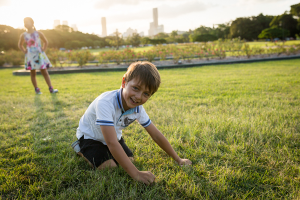There are many factors that can help children settle back into the school year – all involve consistency and predicatability of implementation.
It’s the consistent application of these areas that helps to reduce anxiety and aims reduce the incidence of challenging behaviours
1. Re-establish a regular before-school and after school routines from week 1
They might vary each day depending on commitments and might need to be varied for different children in a family. Routines are the foundation you can build other strategies and helpful behaviours on. Families that have inconsistent or unreliable routines tend to encounter more problem behaviours and more challenges on a daily basis.
The most helpful way to avoid inconsistent routines that vary from day to day, is to write down the morning and afternoon routines – most inconsistent routines are verbal and based on the parent verbally requesting the child to engage in the next activity.
The start of a new school year is a great opportunity to develop consistent morning and afternoon routines and enjoy a smoother running household overall.
2. Look into engaging or re-engaging your child in an activity or sport outside of school
For many kids, participating in activities such as scouts, guides, martial arts or sports gives them something to look forward to each week, an opportunity to develop social skills/ develop friendships and gives them an opportunity to develop their self-confidence and self-esteem. It’s quite common for kids to decide they don’t like an activity part way through a year or after only a couple of attempts, but don’t necessarily disregard last years attempt as something they won’t like for ever. Maybe sit down and have discuss a couple of ideas for this year and then go and organise to just go along and watch before committing to an activity. Choosing something that matches your child’s strengths and interests is often important




 We can’t always predict what is going to happen on a daily basis and life will throw challenges our way, and at our kids too! So helping our children to understand that, and experience some flexibility rather than being stuck in rigidity, teaches them that it is a positive skill to be able to adapt to changes and go with the flow and fosters resilience.
We can’t always predict what is going to happen on a daily basis and life will throw challenges our way, and at our kids too! So helping our children to understand that, and experience some flexibility rather than being stuck in rigidity, teaches them that it is a positive skill to be able to adapt to changes and go with the flow and fosters resilience.



 Encourage your child to pick at least five people then assign each person to a finger or thumb on one hand. This can help your child remember who those support people are, e.g. my teacher is my pointer finger.
Encourage your child to pick at least five people then assign each person to a finger or thumb on one hand. This can help your child remember who those support people are, e.g. my teacher is my pointer finger. Encourage your child to be a friend in order to make and keep friends. Being involved in social, sporting, cultural, school, or spiritual events and groups can also promote a child’s sense of belonging, self worth, and belief that they are surrounded by people who will support them when in need.
Encourage your child to be a friend in order to make and keep friends. Being involved in social, sporting, cultural, school, or spiritual events and groups can also promote a child’s sense of belonging, self worth, and belief that they are surrounded by people who will support them when in need.
